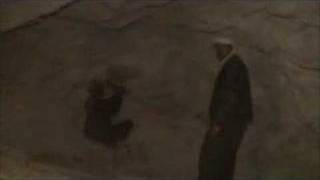Lapis Lazuli mining in Sari-i-Sang in northern Afghanistan
Lapis Lazuli mining in Sari-i-Sang in northern Afghanistan

James Bays makes the dangerous journey to the mines and finds men who risk their lives to get to these gems. To get to the world’s largest lapis lazuli mine – you have to go on a gruelling journey.
It takes more than 12 hours from the nearest town by road, although there are no real roads to speak of. These are mountain passes – some them are extremely treacherous – and they can only be navigated slowly and extremely carefully. Finally, you drop down into the Kocha valley – and the mines at Sari-i-Sang, where a village has been built to house the hundreds of men involved in the search for lapis lazuli.
The gemstone – actually a complex mineral made up of sodium and aluminium has been highly sought after for thousands of years. The deep ocean blue stones are on sale as jewellery and gift boxes in shops in Kabul, but much of the lapis mined in Northern Afghanistan is smuggled across the border to Pakistan.
The village is the base camp for a highly lucrative, yet until recently a totally illegal, business.
You are already at a high altitude here – before you start climbing to the mines themselves. At this height you soon get out of breath.
Once inside the dark airless mineshafts, you meet the men who risk their lives for a tiny share of the profits.
Deep inside the mountain, the only light is from a number of gas lamps. No one is wearing any safety equipment as they detonate the dynamite
Once the dust has settled after a controlled explosion, they go back down the shaft.
The men in these mine shafts get paid only when they find something.
Mohammed Habid told me he has been working every day for five months and he has found nothing.
He will stay for another two months because his family is desperate for the money.
Back in the 1980s, the proceeds from the mine used to fund the mujahidin fighting the Soviet occupation. Finding out who takes the profits now is more difficult. The mine is supposed to be overseen by the Afghan government, but we were told their officials are rarely allowed on site.
